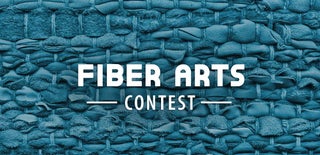Introduction: Visible Mending
Clothes get holes in them, that’s just a fact of life. Fixing those holes doesn’t have to be limited to a boring old patch, though— it can be interesting and beautiful!
Supplies
You will need . . .
Yarn for mending your hole. Sport or sock weight is good, though you can use whatever you like best.
A needle to fit your yarn.
Scissors.
Something with a hole in it.
You might also want . . .
An embroidery hoop to hold your fabric taut.
Fusible interfacing to help stabilize your hole while you mend it.
An iron to attach your interfacing.
A quilting marker to sketch out your design.
Step 1: Stabilize Hole
If it’s a small hole, you can skip this step. If it’s a large one, you’ll want to stabilize it before starting.
Turn your piece inside out, and press it flat. Cut a piece of fusible interfacing to slightly larger than the hole; I usually do about 1 inch on each side. One side of the interfacing will be covered with little dots; those are the glue, so lay that side against the fabric.
Set your iron to “wool,” cover the interface with a damp cloth, and press for about 15 seconds. Try not to let the iron slide, just set it straight down and lift straight up. Repeat over the whole piece of interface, overlapping slightly.
Let the fabric cool down and test the bond. If it’s not adhering yet, repeat until it does. It usually takes me a few passes.
Step 2: Fix the Hole
Now that your hole’s stable, turn it right-side out again and center it in the embroidery hoop if you’re using one. I have a tension-style hoop, so I put mine in upside-down with the outer ring on the underside of the fabric, so I’m less likely to get the yarn tangled around the squeeze tabs. You can take this opportunity to clip off any stray threads with a small pair of scissors.
Begin stitching. Don’t tie a knot in your yarn— either hold the end against the back of the fabric and stitch over it, or leave a long tail and just tuck it out of the way to weave in later.
For this hole, I stitched back-and-forth at an angle the whole length for the first layer. I didn't worry about keeping the ends of the stitches lined up, but if you want your edges to be straighter, use the quilting marker to draw lines before stitching.
Next, use the needle to weave back through in the other direction. Use the same color, or a different one-- it's your piece! Note that normally in weaving the yarn turns around at the end of a row, but for this I'm treating it like a stitch and taking it down through the fabric, then back up at the beginning of the next row. This just anchors it a bit better, and adds a little extra stability.
Flip your piece inside out, weave in any remaining tails, and clip the ends close.
Step 3: Make It Interesting: Trees
Back to the outside now: fixed, but kind of boring. Let’s make it more interesting! I think it looks kind of like grass, so I’m going to Bob Ross it up with some trees. I freehanded this, but you can also use a quilting marker to sketch out your design.
For the trunks, I’m using stem stitch. To do stem stitch, come back up next to the previous stitch slightly behind the end of it, then repeat. Several lines of stem stitch right next to each other make a nice tree trunk.
Somehow I wound up without a closeup of the tree tops, so I made a little drawing. Basically, it's a series of angled stitches, overlapping at the ends in a kind of fishbone pattern. I start at the top and go down at an angle, come back up slightly above there, go back up at an angle, come back up slightly to the side, go down, etc.
When you're finished, flip it inside out and weave in any tails, then clip the ends close.
Step 4: Make It Interesting: Roots
At some point, I noticed that there was a weak spot I hadn't seen before, somewhat below the original rip. So I used the weaving technique to go over that too, filling in the area between the weak spot and the green bar. To ensure that there weren't long floats where the yarn wasn't attached to the fabric, I used a variant of the stem stitch when the triangle got wider. Treat each line as a separate row when weaving, even if it's double-thick by being done with stem stitch. You could also use backstitch, if you prefer.
The roots are a little bit structural, but mainly for decoration. I used a back stitch for those; each time you come up through the fabric, instead of going forward, bring the needle back down in the same place where the previous stitch came up. Keep making roots until it looks right to you, then flip it inside out, weave in any tails, and clip the ends close. At this point, I hadn't done a perfect job attaching the interfacing so I trimmed the excess away.
Turn your piece back right side out, and put it on. If you want, you can cover up the inside with another piece of fabric, either with fusible web between it and the piece, or by hand stitching around it like a frame. Either way, wear it proudly. You've not only kept something out of the landfill, but you've also made it unique. Enjoy!

Participated in the
Fiber Arts Contest










